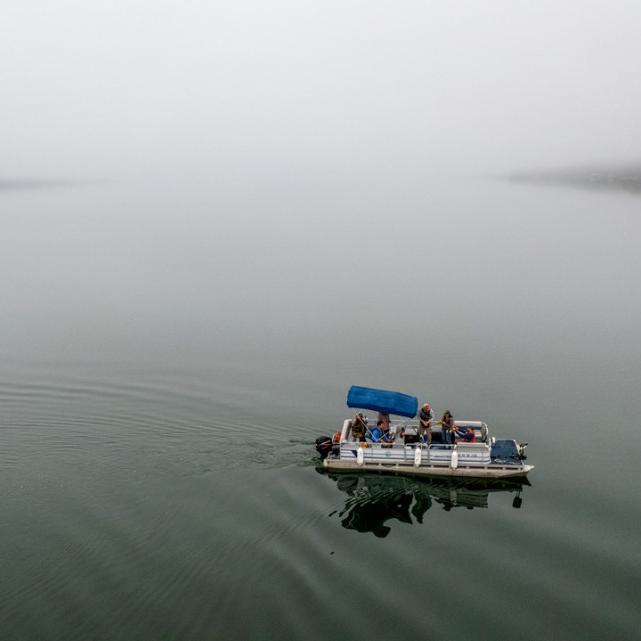After the United Nations’ ominous warning on May 6 that a million of Earth’s species are threatened with extinction, Drew Harvell’s new book, “Ocean Outbreak,” offers insight into the dynamics of infectious disasters by examining four sentinel animals that live under the sea.
Harvell, professor of marine biology in the Department of , shows how these creatures – and humans – are under microbial and environmental siege.
“Ocean Outbreak” (University of California Press) demonstrates how aquatic microbial outbreaks – in combination with warming oceans, ubiquitous plastic, unchecked overfishing and dumped sewage – directly impact our oceanic ecosystems and how it could kill marine life along the full length of the food chain.
“As a marine ecologist specializing in disease, I worry most about the threat posed by microbes,” Harvell said, “because in oceans beset by all these stresses, microscopic disease-causing organisms can gain the upper hand, cause death on a massive scale and bring about rapid, wide-scale ecological change.”
Early in the book, she leads the reader on a tour of living coral reefs from the Caribbean to the heart of the coral triangle in Indonesia and how it feels to work there. Coral reefs provide a coastal buffer from waves and storms, and offer sanctuary for sea creatures that humans consume. Coral reefs not only look like off-shore gardens, but they are animals that make chemicals to ward off bacteria or viruses, and jockey with sponges for underwater space.
Harvell writes of abalone, those snail-like, edible creatures and the long-standing mystery of what is decimating the rich diversity of California species. Abalone aren’t just good to eat, the abalone immune system holds secrets that may prove valuable for human medicine.
For example, the blood pigment hemocyanin, found inside the circulatory systems of abalone, reduces the herpes simplex virus in humans and has a super capacity to carry oxygen in blood, Harvell wrote. Additionally, antiviral compounds have been detected in other mollusks, including oysters and mussels.
“If species like the white abalone and black abalone are driven to extinction by disease, then we will lose important potential sources of drugs that could benefit humans in our own fight against microorganisms,” Harvell said.
Since the 1990s, the Fraser River salmon population has been in steady decline, and sockeye salmon have diminished up to 95 percent. In 2009, for example, more than 11 million sockeyes were forecast for fishers in the Pacific Northwest, but only 1.4 million showed up. Climate change worsened declining stocks: Following the heat wave of 2015, 2016 recorded the lowest number of salmon and 2017 turned out worse.
Killer whales dine on Fraser Chinook salmon, whose decline could spell starvation for an orca whale population already threatened by warming ocean temperatures.
Harvell recounts her labs long-standing research into the horrific demise of sea stars due to wasting disease. Ochre and sunflower stars – a keystone species as big as a manhole cover – help to maintain the balance of other ocean creatures. But because of wasting disease and sea star declines, the underwater seascape has changed.
“The intertidal and subtidal zones along much of the west coast of North America are now different places in terms of their ecology,” said Harvell. Recent work shows catastrophic declines in kelp beds, caused by explosions of the kelp-eating urchins without control by their predator. She did report good news: Ochre stars seem to be making a comeback because disease survivors were shown to be resistant. She also adds hope by proposing new innovations in marine management based on natural pathogen-fighting services of ecosystems like seagrasses.
“At this point in the story, we do not need a crystal ball to see the future,” said Harvell. “Warming the climate and polluting the sea will give new opportunities to underwater microorganisms, resulting in explosive new outbreaks of infectious disease.”
Said Harvell: “My hope is we will be fast enough to develop innovative ways to control the eruptions of new outbreaks and save the ocean’s biodiversity.”






